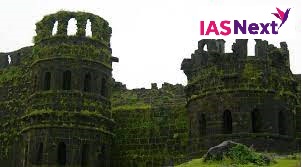CURRENT AFFAIRS
Get the most updated and recent current affair content on Padhaikaro.com
Significance of Raigad fort
- IAS NEXT, Lucknow
- 09, Dec 2021

Reference News:-
President Ram Nath Kovind recently visited Raigad Fort and paid tribute to Chhatrapati Shivaji Maharaj.
Kingdoms and dynasties associated with the fort?
- The fort, which was earlier called Rairi, was the seat of the Maratha clan Shirke in the 12th century.
- The fort changed hands a number of times from the dynasty of Bahaminis to the Nizamshahis and then the Adilshahis.
- In 1656, Chhatrapati Shivaji captured it from the More’s of Javli who were under the suzerainty of the Adilshahi Sultanate.
- In 1662, Shivaji formally changed the fort’s name to Raigad and added a number of structures to it. By 1664, the fort had emerged as the seat of Shivaji’s government.
The fort not only helped Shivaji challenge the supremacy of the Adilshahi dynasty but also opened up the routes towards Konkan for the extension of his power.
Why is it significant?
The fort was known to early Europeans as the Gibraltar of the East. Its decisive feature is a mile and a half flat top which has adequate room for buildings. In its prime, the fort had 300 stone houses and a garrison of 2,000 men.
Importance of Raigad Fort in Maharashtra’s polity:
Chhatrapati Shivaji is the tallest and the most revered icon in Maharashtra and there is a constant attempt by political parties of all hues to appropriate his legacy. Due to the significance of Raigad in his life, many political leaders make it a point to visit the fort.
About Chhatrapati Shivaji– notable points:
- He was born in 1639 to Shahaji Bhonsle, a Maratha general who held the jagirs of Pune and Supe under the Bijapur Sultanate and Jijabai, a pious woman whose religious qualities had a profound influence on him.
- He displayed his military zeal for the first time in 1645 when as a teenager, he successfully got control of the Torna Fort which was under Bijapur. He also acquired the Kondana Fort. Both these forts were under Adil Shah of Bijapur.
- He took on the titles of Chhatrapati, Shakakarta, Kshatriya Kulavantas and Haindava Dharmodhhaarak.
Important battles associated with him:
- Battle of Pratapgad, 1659.
- Battle of Pavan Khind, 1660.
- Battle of Purandar, 1665.
- Battle of Sinhagad, 1670.
- Battle of Kalyan, 1682-83.
- Battle of Sangamner, 1679.
Treaty of Purandar:
In June 1665, the Treaty of Purandar was signed between Shivaji and Raja Jai Singh I (representing Aurangzeb).
- As per this treaty, many forts were relinquished to the Mughals and it was agreed that Shivaji would meet Aurangzeb at Agra. Shivaji also agreed to send his son Sambhaji as well.